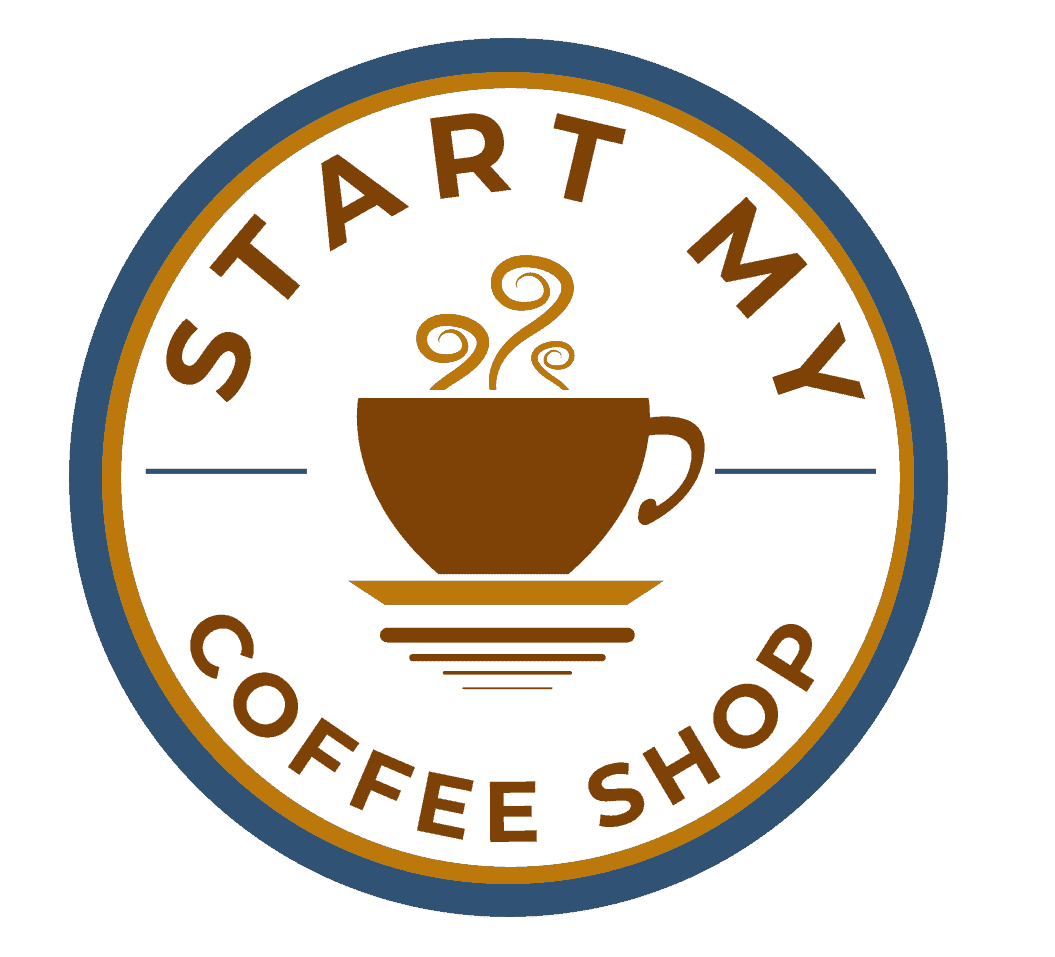In the bustling world of coffee culture, opening a coffee shop can be an exciting and fulfilling venture. However, to navigate the competitive landscape and stand out from the crowd, a well-crafted business plan is essential.
Crafting a business plan for a coffee shop starts with defining your vision and conducting thorough market research. Choose a prime location, design an inviting space, and develop a strong menu. Implement effective operational and marketing strategies, while projecting finances and assessing risks.
In this article, I will go into the key steps to create a business plan for coffee shops.
Define Your Vision
It sets the tone and direction for your business. Take the time to envision the type of coffee shop you want to create, as it will shape your entire venture. Consider what will be your unique selling proposition, the element that sets you apart from the competition.
Will you focus on serving specialty coffee that is meticulously sourced and roasted? Or perhaps you want to create a cozy ambiance where customers can relax and unwind? Maybe you envision your coffee shop as a vibrant community space that fosters connection and engagement.
Understanding your vision is crucial because it serves as a guiding light throughout the entire process of building your coffee shop. It influences your decisions regarding location, menu, branding, and marketing strategies. Having a clear vision helps you stay focused and ensures that every aspect of your coffee shop aligns with your overarching goals.
A well-defined vision allows you to differentiate yourself in the market. It helps you carve out a unique space and attract a specific target audience. Customers are drawn to businesses that have a clear identity and purpose. By honing in on your vision, you can create an authentic and memorable experience for your customers, fostering loyalty and positive word-of-mouth.
Read more about: How Much Does it Cost to Run a Coffee Shop: The Financial Reality of Your Passion
Market Research
Start by identifying your target market. Determine who your ideal customers are, their characteristics, behaviors, and preferences. Are they students seeking a cozy study spot, professionals in need of a convenient meeting place, or residents looking for a gathering spot? Understanding your target market allows you to tailor your offerings and create a space that caters to their specific needs and desires.
Analyzing local demographics is another crucial aspect of market research. Consider factors such as population density, age groups, income levels, and lifestyle trends. This information helps you assess the potential demand for a coffee shop in your area and identify any gaps or opportunities in the market.
In addition, studying your competition is vital to differentiate your coffee shop and develop effective marketing strategies. Identify existing coffee shops in your vicinity and analyze their strengths, weaknesses, and unique selling propositions. Understand what sets them apart and how you can position your coffee shop to stand out. By offering something distinctive or filling an unmet need, you can attract customers and carve out your niche in the market.
Menu and Product Selection

Crafting a well-curated menu is a fundamental aspect of creating a great coffee shop. It serves as a gateway to attracting and retaining customers, enticing them with a delightful array of offerings. To develop a menu that captivates and satisfies, you must consider several key factors.
Start by determining the types of coffee beverages you will offer. Consider the classics like espresso, cappuccino, and lattes, as well as specialty drinks that showcase your creativity and expertise. Experiment with different flavor combinations, brewing techniques, and presentation styles to create a unique and memorable coffee experience.
In addition to coffee, think about incorporating a selection of snacks and food options. This could include pastries, sandwiches, salads, or light bites that complement the coffee offerings. Consider local preferences, dietary restrictions, and current food trends when curating your menu. Offering both sweet and savory options can cater to a wider range of tastes and preferences.
Researching current trends in the coffee industry is crucial to stay relevant and innovative. Explore what effective coffee shops are doing and seek inspiration from their menus. Keep an eye on emerging flavors, brewing methods, and beverage trends. This research can spark creativity and guide you in incorporating new and exciting elements into your menu.
To create a memorable experience, consider offering seasonal specials that reflect the flavors and spirit of each season. Introduce limited-time drinks or food items that align with holidays or local festivities. This not only keeps your menu fresh and exciting but also encourages customers to return regularly to discover what’s new.
Location and Space Design
First and foremost, prioritize areas with high foot traffic. Look for locations near popular shopping centers, busy intersections, or tourist attractions. These areas attract a significant number of people, increasing the chances of attracting customers to your coffee shop. Additionally, seek out locations near office spaces, as professionals often seek convenient places to grab their daily caffeine fix.
Consider the size and layout of the space when evaluating potential locations. Ensure that it can accommodate your desired seating capacity, counter space, and the necessary equipment for coffee preparation. A layout that optimizes traffic flow and provides comfortable seating arrangements contributes to a positive customer experience.
Creating a warm and inviting ambiance is crucial for fostering a welcoming atmosphere. Align the interior design and decor with your brand identity and target audience. For instance, if your coffee shop focuses on a rustic theme, incorporate elements like wooden furniture, cozy lighting, and natural accents.
If your target audience is primarily students, create a vibrant and energetic space with communal seating areas and outlets for laptops. Remember, the ambiance should resonate with your customers and entice them to spend time in your coffee shop.
Furthermore, consider the surrounding neighborhood and its demographics. A residential neighborhood can attract a consistent local customer base, while a business district might cater to professionals seeking a quick caffeine boost. Understand the preferences and needs of the local population to tailor your offerings accordingly.
Read more about: How Much Does it Cost to Own a Coffee Shop: Exploring the Costs Involved
Operational Plan
When it comes to staffing, outline your hiring process and the qualifications you seek in employees. Consider the roles you need, such as baristas, kitchen staff, and cashiers, and define their responsibilities and job descriptions. Additionally, establish a comprehensive training program to ensure that your staff members are equipped with the necessary skills to provide exceptional customer service and maintain quality standards.
Supply chain management is another critical aspect to address. Identify reliable suppliers for your coffee beans, ingredients, and other necessary supplies. Establish relationships with these suppliers to ensure consistent and timely deliveries. Detail the process for inventory management, including tracking stock levels, ordering procedures, and storage requirements. Efficient inventory control minimizes waste and ensures you have the necessary ingredients and supplies to meet customer demand.
Quality assurance is paramount in the coffee shop industry. Specify the standards for coffee preparation, food handling, and overall cleanliness. Develop protocols for equipment maintenance and cleaning routines to maintain the quality and functionality of your equipment. Additionally, outline procedures for monitoring customer feedback and addressing any concerns promptly, as customer satisfaction is crucial for the achievement of your coffee shop.
Marketing and Branding Strategy
This involves understanding what sets your coffee shop apart from others and crafting a narrative that resonates with your target audience. Whether it’s your commitment to sustainability, the quality of your coffee beans, or the inviting atmosphere of your space, highlight these aspects in your branding to create a distinct and memorable image.
Utilize social media platforms, such as Instagram, Facebook, and Twitter, to showcase your coffee offerings, engage with customers, and create a sense of community. Post high-quality photos, share behind-the-scenes content, and interact with followers to build relationships and generate interest in your coffee shop. Consider running targeted online advertisements to reach a wider audience, especially those in your local area who are likely to visit your shop.
Collaborating with other businesses in your community can also be a powerful marketing strategy. Partner with local bakeries, artists, or organizations to host events, cross-promote each other’s offerings, and tap into their existing customer base. These collaborations not only expose your coffee shop to new audiences but also create a sense of community and support within your local area.
Engaging with customers is crucial for building loyalty and repeat business. Implement a loyalty program that rewards customers for their patronage, such as offering discounts, freebies, or exclusive perks. Organize events or workshops that align with your brand values, such as coffee tastings, brewing demonstrations, or educational sessions. These activities not only provide value to your customers but also foster a sense of community and connection.
Financial Projections
Start by estimating the startup costs required to open your coffee shop. This includes expenses such as equipment purchases or leases, leasehold improvements to customize the space, licenses, permits, and initial inventory. By meticulously assessing these costs, you can determine the amount of capital required to launch your business.
Develop a sales forecast based on market research and projected customer traffic. Analyze the target market, local demographics, and competitors to estimate potential sales volume. Consider factors like seasonality, local events, and customer trends to make accurate projections. This forecast will serve as a guideline for revenue expectations and assist in making informed pricing decisions.
Calculate your operating expenses, which include recurring costs such as rent, utilities, payroll, supplies, and marketing expenses. Be thorough in identifying all the necessary expenses to run your coffee shop efficiently. This will provide a realistic view of the ongoing financial commitments and help you determine the level of sales required to cover these expenses.
Read more about: How Much Does it Cost to Open Coffee Shop: Unlocking the Price Tag
Risk Assessment and Contingency Plan
One potential risk is changing consumer preferences and trends. Stay updated on the latest industry trends and adapt your offerings accordingly. Consider diversifying your menu to cater to different preferences and dietary restrictions. This flexibility allows you to stay relevant and attract a broader customer base.
Economic downturns can also affect the coffee industry. During challenging economic times, consumers may cut back on discretionary spending. To address this risk, develop strategies to attract and retain customers during downturns. This could involve offering promotions or discounts, emphasizing the value of your products, or targeting specific customer segments that may be less affected by economic fluctuations.
Supply chain disruptions, such as unforeseen events or changes in regulations, can impact the availability and cost of essential ingredients and supplies. Build strong relationships with reliable suppliers and have backup plans in place to ensure a consistent flow of inventory. Consider alternative sourcing options or maintaining larger inventory reserves to mitigate the risk of supply chain disruptions.
Implementing cost-saving measures is another way to address potential risks. This may involve optimizing operational efficiency, reducing waste, or negotiating better pricing with suppliers. By managing your costs effectively, you can navigate challenging situations and maintain profitability.
Frequently Asked Question

Q: How important is market research when creating a business plan for a coffee shop?
A: Market research is crucial as it helps you understand the demand, competition, and preferences of your target customers, allowing you to tailor your offerings and strategies accordingly.
Q: How can I choose the right location for my coffee shop?
A: When selecting a location, consider high foot traffic areas, proximity to your target customers, and the availability of parking. It should align with your brand, have sufficient space for seating and equipment, and be easily accessible.
Q: How can I differentiate my coffee shop from competitors?
A: To stand out, focus on your unique selling proposition. It could be specialty coffee, a cozy ambiance, or a community-driven approach. Offer distinctive flavors, seasonal specials, or alternative brewing methods to create a memorable experience for customers.
To learn more on how to start your own coffee shop, check out my startup documents here.
Disclaimer: The information provided by StartMyCoffeeShop.com (“The Site”) is for general informational purposes only. All information on the Site is provided in good faith. However, we make no representation or warranty of any kind, express or implied, regarding the accuracy, adequacy, validity, reliability, availability, or completeness of any information on the Site. Under no circumstance shall we have any liability to you for any loss or damage of any kind incurred as a result of the use of the Site or Reliance on any information provided on the Site. Your use of the Site and reliance on any information on the Site is solely at your own risk. This blog post is for educational purposes only and does not constitute legal advice. Please consult a legal expert to address your specific needs. Terms and Conditions. (https://startmycoffeeshop.com/terms-and-conditions/)

Hi! I’m Shawn Chun
My adventure in coffee began when I first launched my first coffee shop back in the early 2000s. I had to figure out so many things on my own and to make it worse within 2 years of opening two large corporate coffee chains moved in just blocks away from me!
As I saw smaller and even some larger coffee shops in the neighborhood slowly lose customers to these giant coffee chains and slowly close up shop, I knew that I had to start getting creative…or go out of business.
I (like you may be) knew the coffee industry well. I could make the best latte art around and the foam on my caps was the fluffiest you have ever seen. I even had the best state-of-the-art 2 group digital Nuova Simonelli machine money could buy. But I knew that these things alone would not be enough to lure customers away from the name brand established coffee shops.
Eventually, through lots of trial and error as well as perseverance and creativity I did find a way to not only survive but also thrive in the coffee/espresso industry even while those corporate coffee chains stayed put. During those years I learned to adapt and always faced new challenges. It was not always easy, however, in the end, I was the sole survivor independent coffee shop within a 10-mile radius of my location. Just two corporate coffee chains and I were left after that year. All told the corporate coffee chains took down over 15 small independent coffee shops and kiosks and I was the last one standing and thriving.
Along the years I meet others with the same passion for coffee and I quickly learned that it is not only “how good a barista is” that makes a coffee shop successful, but the business side of coffee as well.
Hence why I started this website you are on now. To provide the tools and resources for up and coming coffee shop owners to gain that vital insight and knowledge on how to start a coffee shop successfully.
Stick around, browse through my helpful blog and resources and enjoy your stay! With lots of LATTE LOVE!
Shawn






